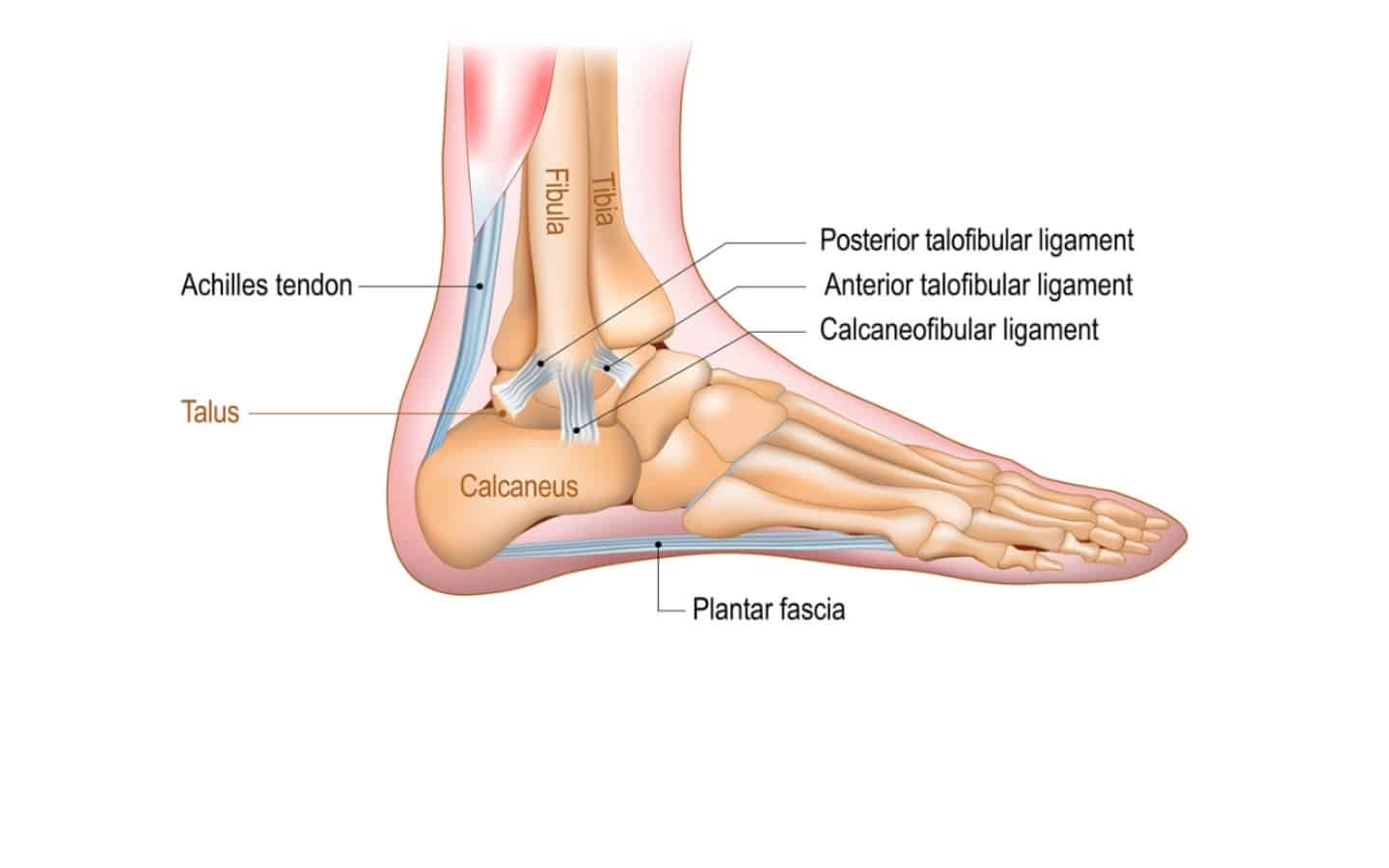
Anatomy Corner: Ankle Sprains
The ankle joint consists of three bones: the tibia (the main shin bone), the fibula (the second shin bone), and the talus (the dome underneath). There are many ligaments and muscles that add stability and controlled mobility to this joint. The primary direction of movement in the ankle is up (dorsiflexion) and down (plantarflexion), but it also moves inward (inversion) and outward (eversion).
There are three main sets of ligaments around the ankle. The inside (medial) ligaments (deltoid) begin at the bottom of the tibia (medial malleolus) and connect to the calcaneus (heel) and navicular bones of the foot. The outside (lateral) ligaments, pictured above, start at the bottom of the fibula (lateral malleolus) and connect to the talus and calcaneus. The third set of ligaments are the syndesmotic ligaments, which connect the fibula and tibia above the ankle joint.
The main muscles that plantarflex the foot (point down) are the gastrocnemius and coleus (the calf). The main muscles that dorsiflex the foot (pull it up) are the tibialis anterior, extensor digitorum longus, and extensor hallucis longus. The main muscles that pull the foot inward (invert) are the tibialis anterior and tibialis posterior. The main muscles that pull the foot outward (evert) are the peroneus longus and peroneus brevis. There are additional muscles that assist these primary movers (1).
Ankle Sprains
Ankle sprains occur very frequently: approximately 25,000 people sprain their ankles daily. This commonly occurs in athletes or in those who perform sudden movements or twist the ankle (2). Ankle sprains occur more frequently in females than in males (13.6 vs. 6.94 per 1,000 exposures). Indoor/court sports are the highest-risk activities for ankle sprains (3). Sprains of the lateral ligaments are the most common, making up 85% of all ankle sprains. About 40% of those who sprain an ankle will have another sprain within one year (4).
The usual mechanism of injury is rolling or twisting the ankle, stepping on an uneven surface, or landing awkwardly. When this happens, the ankle ligaments are stretched and can tear. Symptoms typically include pain, swelling, bruising, and difficulty walking. Severity depends on the degree of ligament tearing and the specific ligaments involved.
Initial treatment usually consists of RICE—rest, ice, compression, and elevation. If there is pain when bearing weight, an x-ray is recommended to rule out a fracture. Depending on severity, a brace or boot may be required (5). Physical therapy helps reduce pain and swelling, regain range of motion, and restore proprioception (balance), with gradual progression of activities as strength and mobility improve.
By Eilish O’Sullivan

